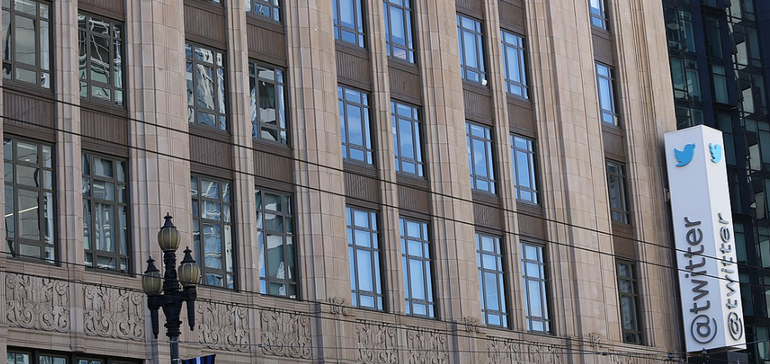SOCIAL
Twitter Shuts Down More International Offices as Musk and Co. Continue to Cut Costs

The chaos continues at Twitter 2.0, with the company closing down several international offices, as new Twitter chief Elon Musk continues to cut costs, in an effort to get the company back on financial track.
According to reports, over the last week or so, Twitter has either closed, or been forced to close, its offices in Hong Kong, the Philippines, Mexico, Africa, Australia and South Korea. Twitter has also shut down several of its offices in Europe and India, amid broad-reaching actions.
Not all of the staff in these offices have been made redundant, as some have been asked to work from home instead, while some of the office spaces have also been closed due to non-payment of rent, as Twitter’s new management team works to rationalize the company’s position.
One of those offices, Twitter’s Asia-Pacific headquarters in Singapore, is now back in action, after the Twitter 2.0 team paid its rent obligations. That’s significant, because while Elon Musk has largely been focused on Twitter’s impact in the US (at least in his external communications), all of Twitter’s growth over the past few years has come from the Asia Pacific region, with India, in particular, becoming a major focus for the platform.
With this in mind, Twitter’s office closures in these key markets could be particularly impactful, with local representatives often providing a key link into local ad markets, content trends, political shifts, etc.
So while Twitter’s looking to cut costs, these closures could ultimately lead to a reduction in the company’s overall income, and it’s hard to see which will have a more significant impact on Twitter’s bottom line.
As reported by Business Insider, before Elon Musk’s takeover at the app, Twitter previously had offices in more than two dozen major cities around the world, including Paris, Madrid, Berlin, Manila, Mumbai, and Jakarta. Twitter also had around 20 offices in the US.
Now, the company’s looking to reduce its office footprint to only a few major cities, including the San Francisco head office (where it was also recently refusing to pay rent), New York, and LA, along with international outposts in London, Tokyo, and Dublin.
Which, again, will significantly reduce its operational expenses, but the broader impacts on the company could also, eventually, outweigh those benefits.
But then again, in a post-COVID world, where everyone is far more accustomed to meeting via video calls and working online, maybe local offices just aren’t as important as they once were, and maybe Twitter can use this push as a means to significantly drive down costs, and get itself back on the right track.
Which it desperately needs correct.
Shortly after his takeover at the app, Musk claimed that Twitter was losing $4 million per day, due to massive expenses and limited intake. He’s since sought to implement new avenues for the app to make more money, including his $8 per month verification plan, while he’s also culled around 75% of the company’s staff, with Musk continuing to cull employee numbers wherever he can.
It seems like that, inevitably, will have negative impacts. You can’t cut thousands of staff without some things falling apart, or maybe losing out in local markets. But thus far, Twitter is still running, and few would be bold enough to forecast Musk’s failure in this respect, given the success he’s overseen at his other companies.
Maybe, if Musk can get the right staff in place, with the right approach, he can mitigate the impacts, while crushing the app’s costs, on the path to a new way forward for the app.
Maybe. A lot of these impacts will also compound over time, so maybe, right now, the only true change is to Twitter’s bottom line, which looks great for Musk and Co. in their process of improving the business.
But sometime soon, more problems could well arise, and they may be far more costly than the immediate savings.
SOCIAL
Snapchat Explores New Messaging Retention Feature: A Game-Changer or Risky Move?

In a recent announcement, Snapchat revealed a groundbreaking update that challenges its traditional design ethos. The platform is experimenting with an option that allows users to defy the 24-hour auto-delete rule, a feature synonymous with Snapchat’s ephemeral messaging model.
The proposed change aims to introduce a “Never delete” option in messaging retention settings, aligning Snapchat more closely with conventional messaging apps. While this move may blur Snapchat’s distinctive selling point, Snap appears convinced of its necessity.
According to Snap, the decision stems from user feedback and a commitment to innovation based on user needs. The company aims to provide greater flexibility and control over conversations, catering to the preferences of its community.
Currently undergoing trials in select markets, the new feature empowers users to adjust retention settings on a conversation-by-conversation basis. Flexibility remains paramount, with participants able to modify settings within chats and receive in-chat notifications to ensure transparency.
Snapchat underscores that the default auto-delete feature will persist, reinforcing its design philosophy centered on ephemerality. However, with the app gaining traction as a primary messaging platform, the option offers users a means to preserve longer chat histories.
The update marks a pivotal moment for Snapchat, renowned for its disappearing message premise, especially popular among younger demographics. Retaining this focus has been pivotal to Snapchat’s identity, but the shift suggests a broader strategy aimed at diversifying its user base.
This strategy may appeal particularly to older demographics, potentially extending Snapchat’s relevance as users age. By emulating features of conventional messaging platforms, Snapchat seeks to enhance its appeal and broaden its reach.
Yet, the introduction of message retention poses questions about Snapchat’s uniqueness. While addressing user demands, the risk of diluting Snapchat’s distinctiveness looms large.
As Snapchat ventures into uncharted territory, the outcome of this experiment remains uncertain. Will message retention propel Snapchat to new heights, or will it compromise the platform’s uniqueness?
Only time will tell.
SOCIAL
Catering to specific audience boosts your business, says accountant turned coach

While it is tempting to try to appeal to a broad audience, the founder of alcohol-free coaching service Just the Tonic, Sandra Parker, believes the best thing you can do for your business is focus on your niche. Here’s how she did just that.
When running a business, reaching out to as many clients as possible can be tempting. But it also risks making your marketing “too generic,” warns Sandra Parker, the founder of Just The Tonic Coaching.
“From the very start of my business, I knew exactly who I could help and who I couldn’t,” Parker told My Biggest Lessons.
Parker struggled with alcohol dependence as a young professional. Today, her business targets high-achieving individuals who face challenges similar to those she had early in her career.
“I understand their frustrations, I understand their fears, and I understand their coping mechanisms and the stories they’re telling themselves,” Parker said. “Because of that, I’m able to market very effectively, to speak in a language that they understand, and am able to reach them.”Â
“I believe that it’s really important that you know exactly who your customer or your client is, and you target them, and you resist the temptation to make your marketing too generic to try and reach everyone,” she explained.
“If you speak specifically to your target clients, you will reach them, and I believe that’s the way that you’re going to be more successful.
Watch the video for more of Sandra Parker’s biggest lessons.
SOCIAL
Instagram Tests Live-Stream Games to Enhance Engagement

Instagram’s testing out some new options to help spice up your live-streams in the app, with some live broadcasters now able to select a game that they can play with viewers in-stream.
As you can see in these example screens, posted by Ahmed Ghanem, some creators now have the option to play either “This or That”, a question and answer prompt that you can share with your viewers, or “Trivia”, to generate more engagement within your IG live-streams.
That could be a simple way to spark more conversation and interaction, which could then lead into further engagement opportunities from your live audience.
Meta’s been exploring more ways to make live-streaming a bigger consideration for IG creators, with a view to live-streams potentially catching on with more users.
That includes the gradual expansion of its “Stars” live-stream donation program, giving more creators in more regions a means to accept donations from live-stream viewers, while back in December, Instagram also added some new options to make it easier to go live using third-party tools via desktop PCs.
Live streaming has been a major shift in China, where shopping live-streams, in particular, have led to massive opportunities for streaming platforms. They haven’t caught on in the same way in Western regions, but as TikTok and YouTube look to push live-stream adoption, there is still a chance that they will become a much bigger element in future.
Which is why IG is also trying to stay in touch, and add more ways for its creators to engage via streams. Live-stream games is another element within this, which could make this a better community-building, and potentially sales-driving option.
We’ve asked Instagram for more information on this test, and we’ll update this post if/when we hear back.
-

 PPC6 days ago
PPC6 days ago19 Best SEO Tools in 2024 (For Every Use Case)
-
SEARCHENGINES5 days ago
Daily Search Forum Recap: April 19, 2024
-

 MARKETING7 days ago
MARKETING7 days agoEcommerce evolution: Blurring the lines between B2B and B2C
-
SEARCHENGINES6 days ago
Daily Search Forum Recap: April 18, 2024
-

 WORDPRESS6 days ago
WORDPRESS6 days agoHow to Make $5000 of Passive Income Every Month in WordPress
-

 SEO7 days ago
SEO7 days ago2024 WordPress Vulnerability Report Shows Errors Sites Keep Making
-

 WORDPRESS6 days ago
WORDPRESS6 days ago10 Amazing WordPress Design Resouces – WordPress.com News
-
WORDPRESS7 days ago
[GET] The7 Website And Ecommerce Builder For WordPress
















You must be logged in to post a comment Login